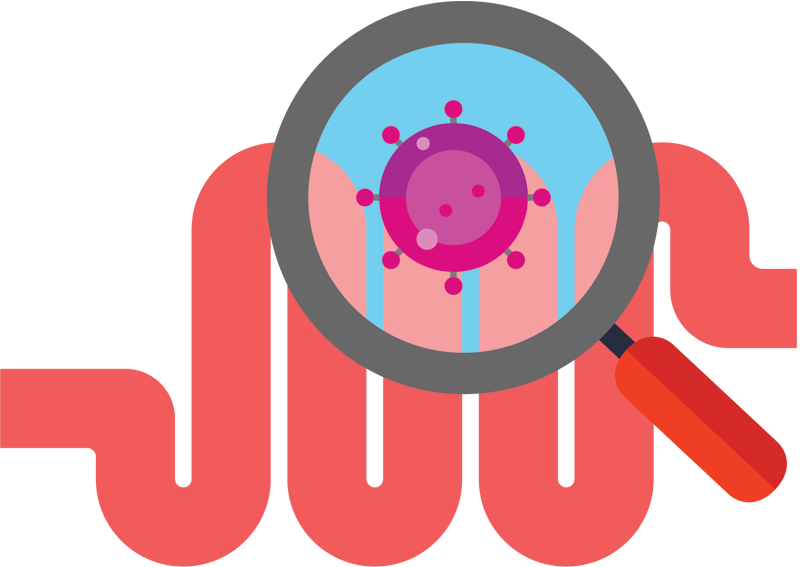Call them the guardians of the gut microbiome: bacteria that are associated with protection against food allergies. Such bacteria, “good” bacteria, have been identified in the human infant gut. Other bacteria, “bad” bacteria, associated with food allergies in infant patients, have been identified, too.
These findings were reported by scientists based at Boston Children’s Hospital (BCH) and Brigham and Women’s Hospital (BWH). The scientists also tested whether the good bacteria could be used therapeutically. After supplying the good bacteria to mice, the scientists observed that the mice became more resistant to food allergy and even experienced reversals of established disease.
Details appeared June 24 in the journal Nature, in a paper titled, “Microbiota therapy acts via a regulatory T cell MyD88/RORγt pathway to suppress food allergy.” The paper indicates that orally administered microbial therapy can resolve dysbiosis, reset the immune system, and promote tolerance of food allergens.
“Therapy with Clostridiales species impacted by dysbiosis, either as a consortium or as monotherapy with Subdoligranulum variabile, suppressed food allergy in mice as did a separate immunomodulatory Bacteroidales consortium,” the article’s authors wrote. “Bacteriotherapy induced expression by regulatory T cells of the transcription factor ROR-γt in a MyD88-dependent manner, which was deficient in fool allergy infants and mice and ineffectively induced by their microbiota.”
To confirm this immunomodulatory mechanism, the BCH/BWH team deleted Myd88 or Rorc in T regulatory cells. Doing so, the scientists observed, abrogated protection by bacteriotherapy. “Commensals activate a MyD88/ROR-γt pathway in nascent T regulatory cells to protect against food allergy,” they concluded, “while dysbiosis impairs this regulatory response to promote disease.”
These findings point to a new bacteriotherapy approach, one representing a marked contrast to oral immunotherapy, a strategy that aims to increase the threshold for triggering an allergic reaction by giving an individual small but increasing amounts of a food allergen. Unlike oral immunotherapy, bacteriotherapy attempts to change the immune system’s wiring in an allergen-independent fashion, with potential to broadly treat food allergies rather than desensitizing an individual to a specific allergen.
For reasons that remain a mystery, the number of Americans who suffer from food allergies has risen sharply over the last decade to as many as 32 million, according to one recent estimate. Nearly 8% of children in the United States—about two in every classroom—are affected.
One hypothesis is that certain Western lifestyle factors—including an increase in births by Caesarean section, a decline in breastfeeding, increased use of antibiotics, and smaller family sizes—are disrupting the normal microbial balance in the gut, depriving babies of the good bacteria that prepare the immune system to recognize food as harmless.
To test this hypothesis the BCH/BWH team studied gut bacteria in babies with and without food allergies. It collected stool samples from 56 food-allergic patients and 98 matched controls. When it analyzed the samples for changes in bacterial content, the BCH/BWH team revealed that the bacteria in the feces of babies with food allergies were different from those of controls. But did those bacterial differences play a role in their food allergies?
To find out, the team transplanted fecal bacteria from the babies into a special strain of allergy-prone mice. They fed the mice small doses of chicken egg protein to sensitize their immune systems to this allergen, then challenged the mice with a large dose.
The results: Mice that had been given fecal bacteria from food-allergic babies went into the life-threatening reaction called anaphylaxis. “The fecal bacteria from food-allergic subjects did not protect against food allergy, whereas the bacteria from control subjects did,” said Talal A. Chatila, MD, director of the Food Allergy Program at BCH and one of the Nature paper’s senior authors.
“It’s very complicated to look at all of the microbes in the gut and make sense of what they may be doing in food allergy, but by using computational approaches, we were able to narrow in on a specific group of microbes that are associated with a protective effect,” noted co-first author Georg Gerber, MD, PhD, MPH, co-director of the Massachusetts Host-Microbiome Center and chief of the division of computational pathology in the department of pathology at BWH. “Being able to drill down from hundreds of microbial species to just five or six or so has implications for therapeutics and, from a basic science perspective, means that we can start to figure out how these specific bacteria are conferring protection.”
“This represents a sea change in our approach to therapeutics for food allergies,” added co-senior author Lynn Bry, MD, PhD, director of the Massachusetts Host-Microbiome Center at BWH. “We’ve identified the microbes that are associated with protection and ones that are associated with food allergies in patients. If we administer defined consortia representing the protective microbes as a therapeutic, not only can we prevent food allergies from happening, but we can reverse existing food allergies in preclinical models.”
Chatila, Gerber, and Bry are founders and have equity in Consortia Therapeutics, a company that is developing a live human biotherapeutic product (CTX-944). (Rima Rachid, MD, assistant director of the Food Allergy Program at BCH and another co-senior author of the Nature paper, also has equity in the company.) Consortia Therapeutics is preparing for a Phase Ib trial in pediatric food allergy, followed by expansion into additional allergic diseases.



